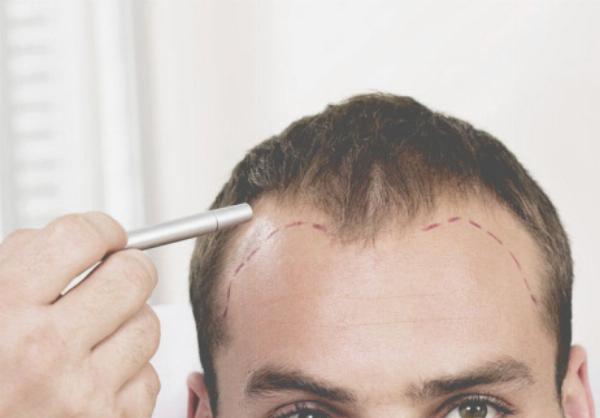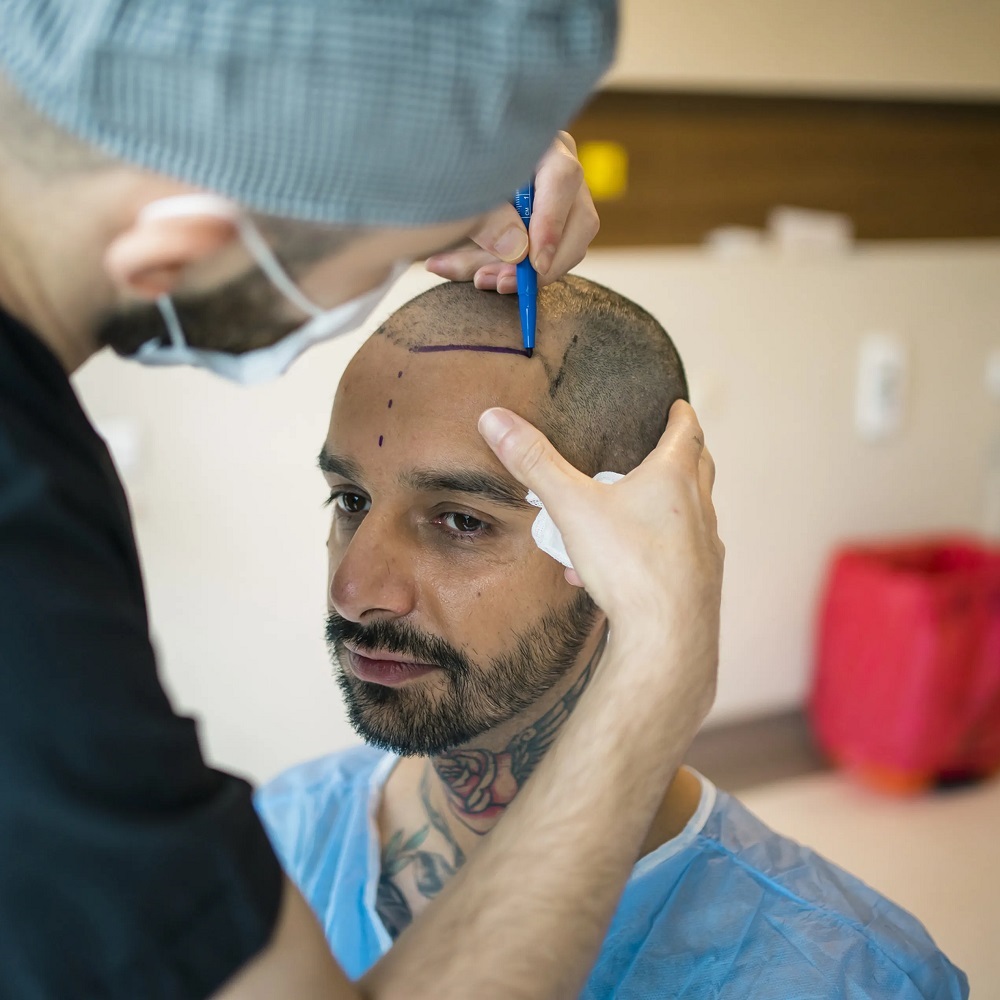How to Handle Expectations and Reality After a Hair Transplant

Strong 8k brings an ultra-HD IPTV experience to your living room and your pocket.
Hair transplants have become a popular solution for those dealing with hair loss. With advancements in medical technology, the procedure has become more accessible and effective. However, it's important to understand that hair transplants aren't magic; they require patience, realistic expectations, and an understanding of what the process entails. This article will guide you through what to expect after a Hair Transplant in muscat and how to manage your expectations to achieve the best possible results.
✍️ Choosing the right clinic makes all the difference. Learn how to evaluate doctors, equipment, and safety standards in our expert resource on hair treatment procedures worldwide.
Understanding the Basics of a Hair Transplant
Before diving into the post-transplant experience, it's crucial to understand what a hair transplant involves. There are two main types of hair transplant procedures: Follicular Unit Transplantation (FUT) and Follicular Unit Extraction (FUE).
FUT involves removing a strip of scalp from the donor area (usually the back of the head) and then dissecting it into individual follicular units to be transplanted.
FUE involves extracting individual hair follicles directly from the donor area and transplanting them into the thinning or balding areas.
Both methods have their pros and cons, and the choice between them depends on factors like the extent of hair loss, hair type, and personal preference. Regardless of the method chosen, understanding that hair growth after a transplant is a gradual process is essential to handling your expectations.
The Immediate Aftermath: What to Expect in the First Few Days
The first few days after a hair transplant are critical for the healing process. Immediately after the procedure, you might experience:
Swelling: It's common to have swelling in the forehead and around the eyes. This usually subsides within a few days.
Soreness and Redness: The scalp will likely be sore, and there may be redness in the transplanted and donor areas.
Crust Formation: Small scabs or crusts will form around each transplanted follicle. These should not be picked at and will fall off on their own within a week or two.
Sensitivity: The scalp may be sensitive, so it's important to follow the post-operative care instructions provided by your surgeon.
During this time, it's important to be gentle with your scalp, avoid strenuous activities, and keep your head elevated while sleeping to reduce swelling. Understanding that these side effects are temporary will help you manage your expectations.
The Shedding Phase: A Normal Part of the Process
One of the most surprising aspects of the hair transplant journey is the shedding phase. This typically occurs within the first two to eight weeks post-transplant. Many people are shocked and disheartened when they see their newly transplanted hair falling out, but this is entirely normal.
This shedding is known as "shock loss," and it's a natural part of the hair growth cycle. The transplanted hairs fall out, but the follicles remain intact beneath the scalp. New hair will begin to grow from these follicles in the following months.
Understanding that shedding is not a sign of failure but rather a normal part of the process is crucial for managing your expectations during this period.
The Waiting Game: Patience is Key
Hair growth after a transplant doesn't happen overnight. In fact, it can take several months before you start seeing noticeable results. The first new hairs usually appear around three to four months after the procedure, but they will be fine and sparse initially. It’s not until about six to nine months that you’ll start to see more significant growth, with full results taking up to 12 to 18 months.
During this time, it's essential to be patient and trust the process. Comparing your progress to others or expecting immediate results can lead to unnecessary anxiety and disappointment. Remember that everyone's hair growth journey is unique, and factors like hair type, age, and overall health can influence the outcome.
Managing Expectations vs. Reality
One of the most important aspects of handling expectations after a hair transplant is having a realistic understanding of what the procedure can and cannot achieve.
Density: While a hair transplant can significantly improve the appearance of thinning or balding areas, it may not completely restore the same density as your natural hair. The goal is often to create the illusion of fullness, especially in areas where hair is sparse.
Hairline: Your new hairline may not be exactly as you imagined. Surgeons aim to create a natural-looking hairline that complements your facial features, which may differ slightly from your ideal image.
Coverage: The amount of donor hair available will determine how much coverage can be achieved. In cases of extensive hair loss, there may not be enough donor hair to cover all affected areas, meaning some regions might still appear thin.
Understanding these limitations can help you set realistic expectations and avoid disappointment. It's also important to discuss your goals and concerns with your surgeon before the procedure so that you have a clear understanding of what is achievable.
Post-Transplant Care: Essential for Optimal Results
Proper post-transplant care is crucial to achieving the best possible results. Your surgeon will provide you with detailed instructions on how to care for your scalp in the days and weeks following the procedure. Some general tips include:
Avoiding Sun Exposure: The scalp will be sensitive after the procedure, so it's important to avoid direct sun exposure for the first few weeks. Wearing a loose-fitting hat can help protect your scalp when you need to go outside.
Gentle Washing: You'll likely be advised to avoid washing your hair for the first few days. When you do start washing, use a gentle shampoo and avoid rubbing or scratching the scalp.
No Strenuous Activities: Avoid activities that can cause sweating or increase blood flow to the scalp, as this can affect the healing process.
Follow-Up Appointments: Attend all scheduled follow-up appointments with your surgeon to monitor your progress and address any concerns.
By following these guidelines, you can help ensure that your transplanted hair follicles are given the best possible environment to thrive.
Emotional and Psychological Considerations
The emotional aspect of a hair transplant is often overlooked, but it's just as important as the physical side. Hair loss can have a significant impact on self-esteem, and a hair transplant can help restore confidence. However, it's important to be aware that the journey is a gradual one, and emotional ups and downs are normal.
Dealing with Disappointment: It's common to feel disappointed or anxious during the early stages when results are not yet visible. Remember that this is temporary, and focusing on the long-term outcome can help you stay positive.
Social Interactions: Some people may feel self-conscious about their appearance during the recovery phase. It's okay to take your time before resuming social activities or to wear hats or scarves until you're comfortable.
Support System: Having a support system in place, whether it's friends, family, or online communities, can be incredibly helpful. Sharing your experience with others who have gone through the same process can provide reassurance and encouragement.
When to Consult Your Surgeon
While most post-transplant experiences are uneventful, it's important to know when to seek medical advice. If you experience any of the following symptoms, contact your surgeon:
Severe Pain or Swelling: While some discomfort is normal, severe pain or swelling that doesn't improve could indicate an infection or other complication.
Excessive Bleeding: A small amount of bleeding is normal, but if you notice excessive bleeding that doesn't stop, seek medical attention.
Fever: A fever could be a sign of infection, and it's important to get it checked out as soon as possible.
Being proactive about your health and staying in communication with your surgeon will help ensure a smooth recovery and the best possible outcome.
Final Thoughts: Embracing the Journey
A hair transplant is a significant step in addressing hair loss, and it's important to approach it with realistic expectations and a positive mindset. The journey to fuller hair is gradual, requiring patience and understanding of the process. By managing your expectations, following post-operative care instructions, and staying in touch with your surgeon, you can achieve satisfying and long-lasting results.
Note: IndiBlogHub features both user-submitted and editorial content. We do not verify third-party contributions. Read our Disclaimer and Privacy Policyfor details.







